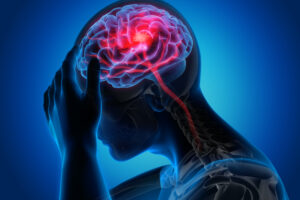A study published in The Lancet Neurology reveals a troubling stagnation in the progress against stroke burden worldwide, with incidence rates failing to decline significantly since 2015. This analysis of the Global Burden of Disease (GBD) Study 2021 shows that the absolute numbers of strokes, related deaths and disability-adjusted life years (DALYs) have all risen considerably from 1990 to 2021, despite earlier global efforts aimed at reducing stroke mortality.
 The study systematically assessed stroke burden across 204 countries over a 31-year period, categorizing strokes into ischaemic, intracerebral haemorrhage and subarachnoid haemorrhage types. The findings underscore stroke as the third leading cause of death globally in 2021, claiming 7.3 million lives and accounting for 10.7% of all deaths. Stroke was also responsible for 160.5 million DALYs worldwide. The report highlighted an uneven geographical impact, with regions such as Southeast Asia, East Asia, Oceania, and countries with lower socio-demographic indices (SDIs) experiencing an alarming rise in stroke incidence, deaths, and DALY rates.
The study systematically assessed stroke burden across 204 countries over a 31-year period, categorizing strokes into ischaemic, intracerebral haemorrhage and subarachnoid haemorrhage types. The findings underscore stroke as the third leading cause of death globally in 2021, claiming 7.3 million lives and accounting for 10.7% of all deaths. Stroke was also responsible for 160.5 million DALYs worldwide. The report highlighted an uneven geographical impact, with regions such as Southeast Asia, East Asia, Oceania, and countries with lower socio-demographic indices (SDIs) experiencing an alarming rise in stroke incidence, deaths, and DALY rates.
The data revealed that in 2021, there were approximately 93.8 million individuals living with stroke and 11.9 million new cases reported. Ischaemic stroke emerged as the most prevalent subtype, constituting 65.3% of incident strokes. Notably, high body mass index (BMI) has seen a striking 88.2% increase in its contribution to stroke-related DALYs since 1990, followed by other risk factors such as high ambient temperature, elevated fasting plasma glucose, and diets high in sugar-sweetened beverages. Despite declines in age-standardized rates for stroke incidence and mortality in some regions, the overall global reduction in stroke rates has slowed markedly in recent years, with some areas even reporting increases in younger populations.
The study’s findings can guide evidence-based healthcare planning and resource allocation for stroke, including tailored strategies for different countries.It highlights the need for the implementation of effective, accessible and affordable measures to improve stroke surveillance, prevention (focusing on blood pressure, lifestyle and environmental factors), acute care and rehabilitation globally.
Read the full publication here
Disclosure: This article was created by the touchNEUROLOGY team utilizing AI as an editorial tool (ChatGPT (GPT-4o) [Large language model]. https://chat.openai.com/chat.) The content was developed and edited by human editors. No funding was received in the publication of this article.













